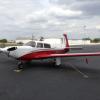-
Members Online
- PeteMc
- Hank
- squawkvfr
- eman1200
- donkaye
- Kerrville
- dkkim73
- Mac80
- Steve2019
- 65MooneyPilot
- richardbrochu27
- benworthy058
- ttflyer
- Stanton R
- Flyler
- Bolter
- JohnnyJ
- whiskytango
- Fly Boomer
- Ethan
- Deb
- NickG
- Jake@BevanAviation
- phrogpilot73
- Fritz1
- cferr59
- Chester
- Z W
- Danb
- Bartman
- Pierre07
- Skyland
- Mooney-Shiner
- Kirch56H
- FlyingDude
- Schllc
- Stealth Mooney
- shwn1226
- BrentS
- BaldEagle


Recommended Posts
Join the conversation
You can post now and register later. If you have an account, sign in now to post with your account.